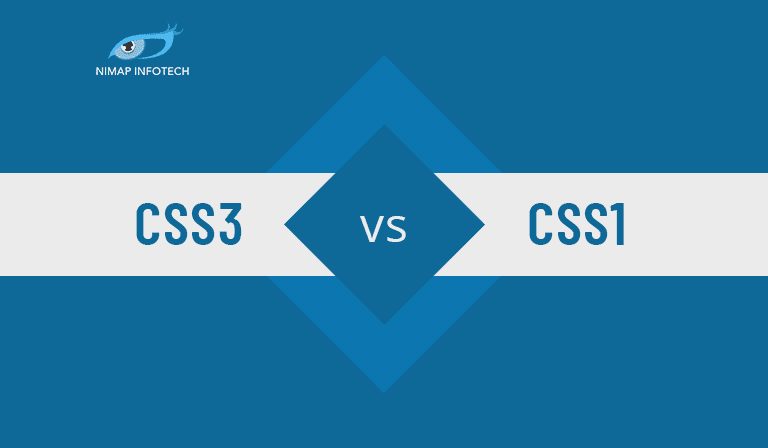Before the invention of CSS, the web was filled with static content. There was no way for the static documents to be formatted in a certain way. The formatting was used to be accomplished by using font attributes such as style and color. In this article, we shall see what all features CSS provides us as well as how does it compare it with the latest version of CSS that is CSS3. We will have a look at the features CSS 1 offers and how CSS 3 Supersedes CSS1 in terms of functionality in applying styles. CSS1 vs CSS3
Table of Contents
ToggleCSS3 vs CSS1
What is CSS?
Cascading Style Sheets (CSS) is a stylesheet language used to describe the presentation of a document markup language such as HTML. CSS is one of the most cornering stone technologies alongside JavaScript and HTML for describing how styles are implemented. It has been designed in order to separate the presentation format from the content. The CSS styles are defined in a single file that is separated from the content (HTML) and is linked externally to the content. Layouts, colors, and fonts are separated from the HTML content in order to organize how web pages are systematically created and managed. Separating the content from the view stylesheet enables developers to make website-wide changes to an appearance by modifying a single file instead of multiple files. The separation can improve content accessibility, and can provide more accessibility and control over the specification of presentation characteristics. The separation of these characteristics also enables web developers to not repeat structural CSS elements for providing the same style throughout the webpage. Separation of formatting and content makes it feasible for presenting the markup in different styles and different rendering methods such as on-screen, in print, by voice.
Let’s compare the features side by side(CSS3 vs CSS1):
Compatibility
CSS1 isn’t compatible with CSS3. Its main focus was on providing varied data format options. They additionally added positioning capabilities for texts and objects.
CSS3 is backward compatible with CSS1. It’ll not create any code written in CSS1 as invalid. It makes the user interface of an online page even higher. They load quicker and therefore the time needed to make a page is even less.
Modular code
One of the major developments is that CSS3 is divided into modules. All of the recent CSS specifications are migrated over to the new edition and divided into smaller items (with some new modules addition as well).
Selectors: Developers will edit components by name, class, type, attribute, and more.
The Box Model module: This describes an approach to making consistency between HTML components on a page, or “boxes.” By applying margins, borders, and artifact to a box’s content, developers will clear space around a part, provides it borders, and more.
Backgrounds and borders: With higher management of the treatments of component borders and page backgrounds, CSS3 additionally allows rounded corners on boxes and drop shadows. Before CSS3, backgrounds had to be achieved with pictures, that added up to a page’s file size and rendering time.
Must Read: CSS 3 vs CSS2
Web Fonts
Web font support offers designers access to far more than simply internet safe fonts
Before CSS3, designers might solely use internet safe fonts. This makes it certain that the fonts would perpetually show constantly on everyone’s machine.
Designers will currently run internet fonts in CSS3, special fonts like those offered via Google Fonts and Typecast. These fonts will either be downloaded onto a server and run through the CSS code, or accessed directly from its supply via a script, that is termed right at intervals the CSS code. This has detached a world of potentialities for designers.
Transformations, animations, and transitions
The animations and 3D transformations square measure higher in CSS3. Components will be affected on the screen with the assistance of flash and javascript. All types of transitions, transformations, and animations will be done in CSS3. Animation in CSS was written in JS or jQuery. CSS didn’t have any feature to animate text. CSS doesn’t offer 3D animation and transformations.
Multiple Backgrounds
In CSS for multiple backgrounds, we want to use roundabout hacks. Whereas in CSS3 we are able to directly add multiple backgrounds world organization CSS.
Recommended Reading: CSS3 Features
Conclusion:
So this was comparison between CSS3 vs CSS1
CSS3 is the newest version of cascading style sheets. CSS3 supports the newest features such as the border box property, media queries, and responsive design. If you’re looking to hire html5 Developers or looking to hire UI UX designer, contact us and we will get you in touch with our expert back end programming team to solve all your website problems.
Author
-

A technology enthusiast with over 14+ years of hands-on experience in the IT industry, I specialize in developing SaaS applications using Microsoft Technologies and the PEAN stack. I lead a team of 300+ engineers, holding multiple Microsoft certifications (MCSD, MCTS, MCPS, MCPD). My expertise spans across C#, ASP.NET, NodeJS, SQL Server, and Postgres.
View all posts








